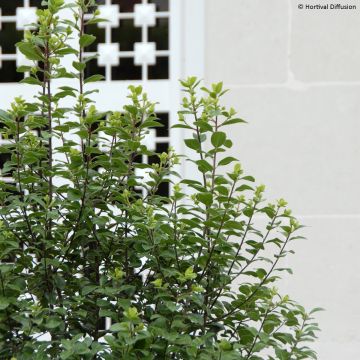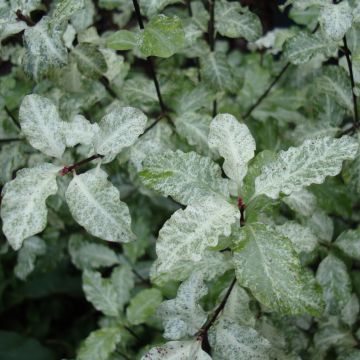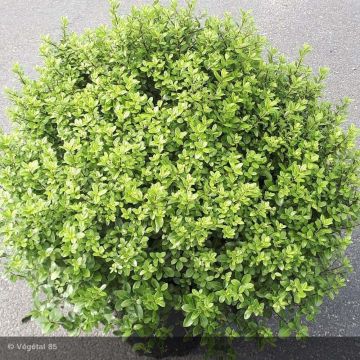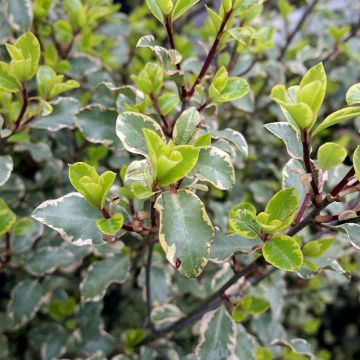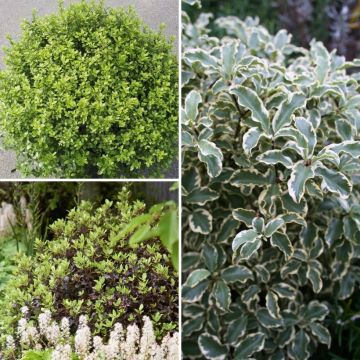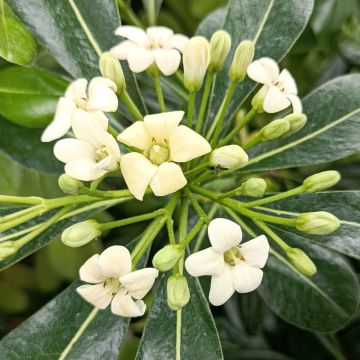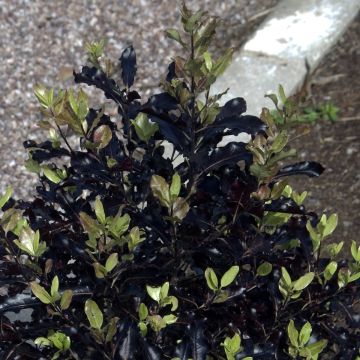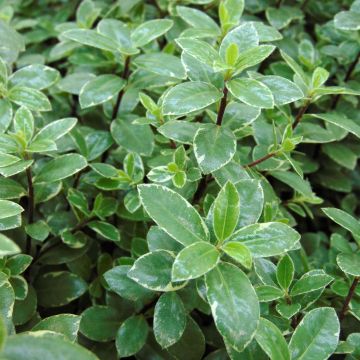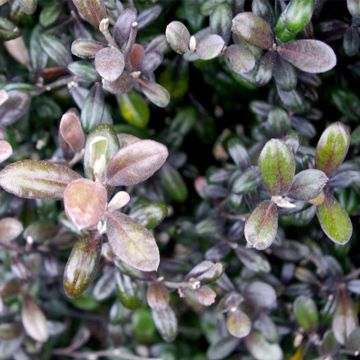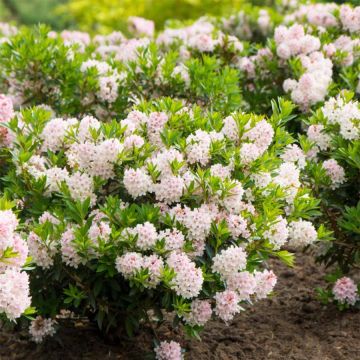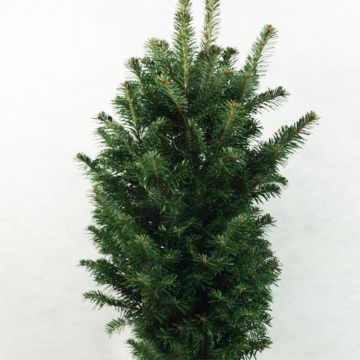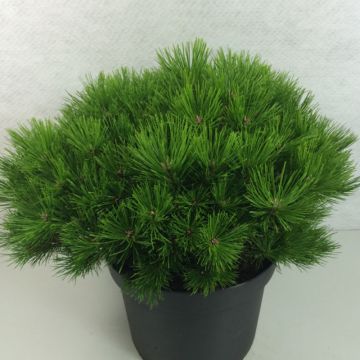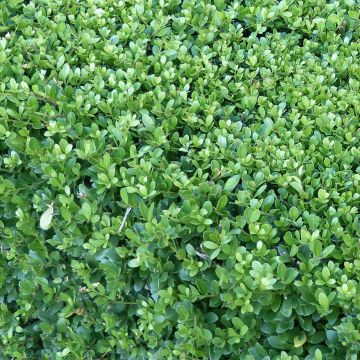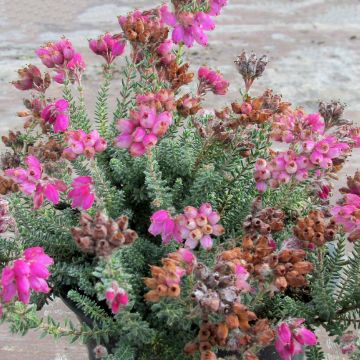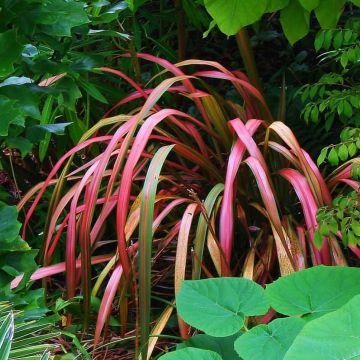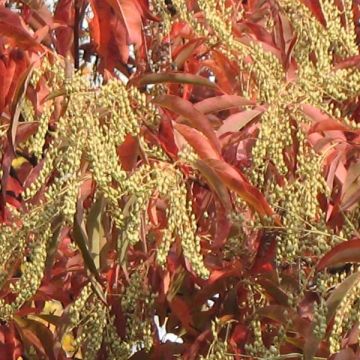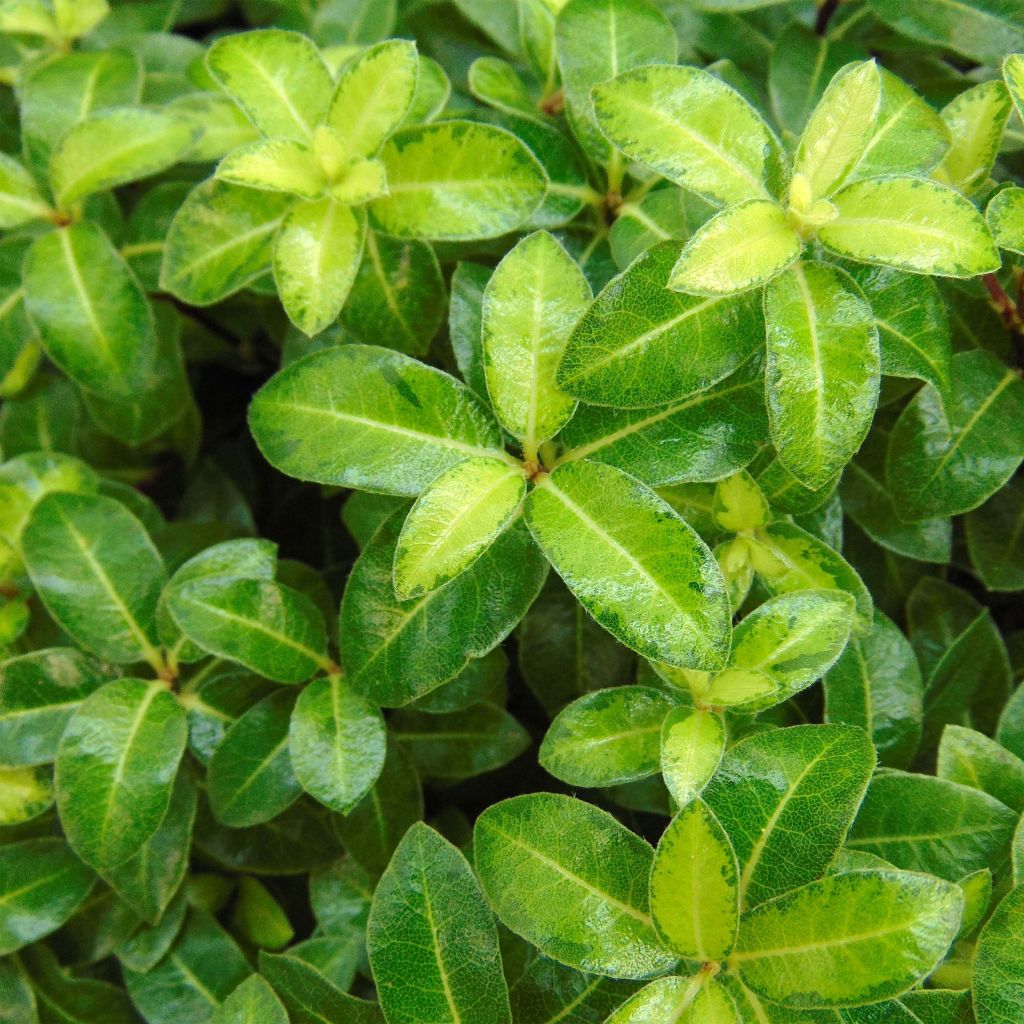

Pittosporum tenuifolium Golden Ball - Kohuhu
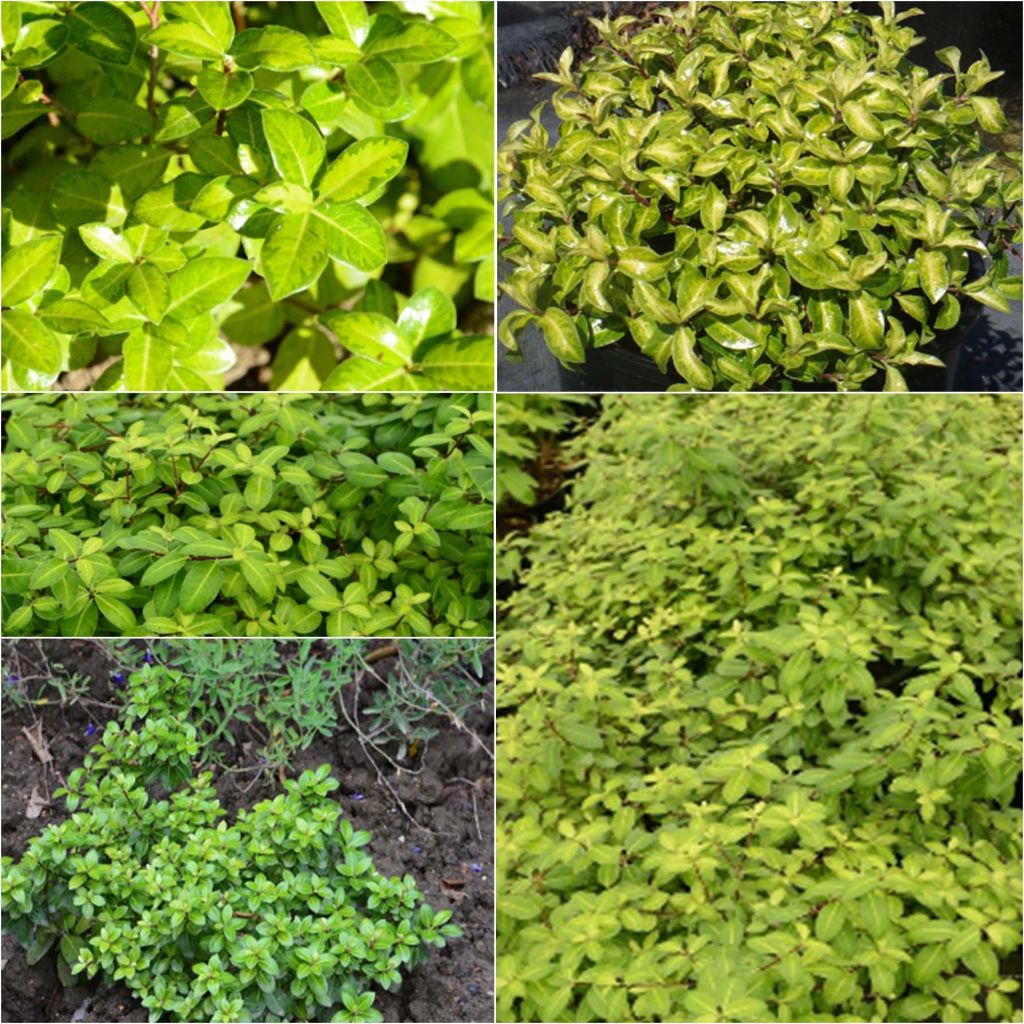

Pittosporum tenuifolium Golden Ball - Kohuhu
Pittosporum tenuifolium Golden Ball - Kohuhu
Pittosporum tenuifolium Golden Ball
Tawhiwhi, Kohuhu, Black Matipo, New Zealand Pittosporum
This item cannot be shipped to the selected country
Delivery charge from €5.90
Delivery charge from €5.90
More information
Schedule delivery date,
and select date in basket
This plant carries a 24 months recovery warranty
More information
We guarantee the quality of our plants for a full growing cycle, and will replace at our expense any plant that fails to recover under normal climatic and planting conditions.
From €5.90 for pickup delivery and €6.90 for home delivery
Express home delivery from €8.90.
From €5.90 for pickup delivery and €6.90 for home delivery
Express home delivery from €8.90.
Does this plant fit my garden?
Set up your Plantfit profile →
Description
Pittosporum tenuifolium 'Golden Ball', a natural mutation of the cultivar 'Golf Ball', is a variety of Pittosporum with particularly compact and bright foliage. On this small round and dense bush, young leaves tinged with yellow and mature leaves of acidic green coexist, shining under the sun. More decorative than boxwood and less susceptible to diseases, it is decorative all year round, tolerates pruning well, and offers a discreet flowering in late spring, exhaling a honey scent in the evening. Its only weak point is a limited hardiness, which limits its cultivation in open ground to mild regions. Plant it in a sunny rock garden, invite it to a dry garden, it tolerates summer drought and limestone soils well. In colder regions, expose it in a large pot on the terrace or balcony, to be stored in cold climates.
Pittosporum tenuifolium, from the Pittosporaceae family, is native to dry regions located east of the New Zealand Alps. The 'Golden Ball' cultivar, obtained in New Zealand in 2008, is directly derived from 'Golf Ball', with the same globular and very compact habit.
Of fairly fast growth, it forms in a few seasons a dense and stocky bush measuring 50 to 80cm (19.7 - 31.5in) in all directions, sometimes up to 1m. Its highly branched stems bear leaves that persist all year round, even in winter. They are born yellow with green margins, then gradually turn into a particularly light and bright green, creating an interesting contrast on the scale of the bush. They are alternate, entire, ovate, thick, very glossy, leathery, with smooth edges. They are small, not exceeding 3 to 3.5cm (1.2 - 1.4in) in length and 1.5cm (0.6in) in width. Flowering occurs in late spring or early summer. The small dark cup-shaped flowers, less than 1cm (0.4in) in diameter, release a scent especially noticeable at night. They are followed by the formation of a few round fruits, initially green and then almost black when ripe. After a somewhat harsh winter that will destroy all or part of the vegetation, the plant can regrow from the stump or base of the branches, after more or less severe pruning depending on the case.
Hardy down to -7°C/-10°C (14 °F), Pittosporum 'Golden Ball' requires a very well-drained soil, a warm, sunny location protected from prevailing winds. In mild climates, it can be planted in a rock garden or at the edge of a flower bed. In a dry garden, it can be paired with Cistus, lavender, oregano, or thyme. In cold regions, it can be placed in a container on a terrace to enjoy its delicate fragrance and rounded charm. This variety, just like boxwood, can also form a neat little hedge and is suitable for topiary art, but it has the advantage of being disease-free, unlike the latter, which is decimated in certain regions. Pair it with fuchsias or shrubby salvias, Prostanthera, Westringia, Grevilleas, compact Escallonias, or combine it with the silver foliage of Artemisias and cotton lavenders.
Report an error about the product description
Pittosporum tenuifolium Golden Ball - Kohuhu in pictures
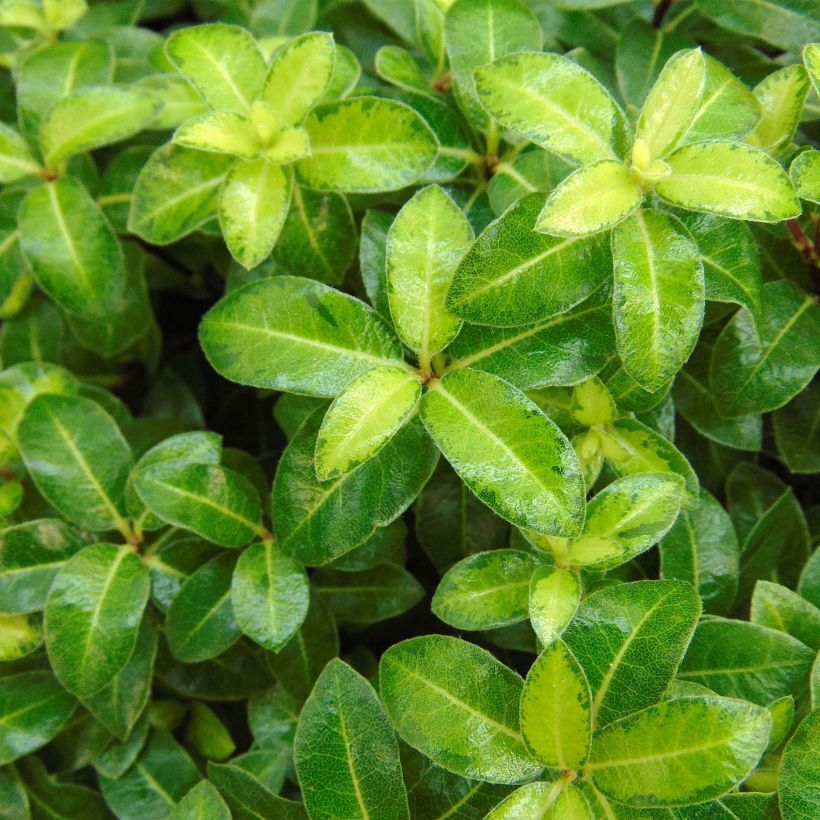

Plant habit
Flowering
Foliage
Botanical data
Pittosporum
tenuifolium
Golden Ball
Pittosporaceae
Tawhiwhi, Kohuhu, Black Matipo, New Zealand Pittosporum
Cultivar or hybrid
Other Pittosporum
Planting and care
The 'Golden Ball' Pittosporum is preferably planted in spring in a fertile, loose, well-drained soil. It tolerates limestone but particularly appreciates soils rich in loam. At planting, mix leaf compost and coarse sand with your garden soil at a ratio of 50%. Water your subject generously once or twice a week to promote establishment. Once established (after 2 or 3 years), this bush will not require watering in summer. In our very dry regions, occasional watering in summer will be welcome. Not very hardy (-7°C/-10°C), choose a warm location, in full sun and sheltered from prevailing winds. Immediately mulch the base. Install it along a south-facing wall in regions with harsh winters. In cold climates, cover it with winter protection or shelter it in a frost-free conservatory for the winter season. To encourage branching during the first years of planting, pinch the young shoots. In mature subjects, trim the untidy branches in the tuft at the end of the season. It is entirely possible to shape it into a ball or a hedge. In case of a somewhat harsh winter (prolonged cold, snow), prune severely, the plant will regrow and the 'ball' will reform. In severe cases, prune to ground level, it is likely to regrow from the stump, quite late in spring.
Pittosporum tenuifolium can be subject to Phytophthora, a fungus that attacks the collar and roots in soils that are both consistently warm and humid.
Planting period
Intended location
Care
-
, onOrder confirmed
Reply from on Promesse de fleurs
Evergreen shrubs
Haven't found what you were looking for?
Hardiness is the lowest winter temperature a plant can endure without suffering serious damage or even dying. However, hardiness is affected by location (a sheltered area, such as a patio), protection (winter cover) and soil type (hardiness is improved by well-drained soil).

Photo Sharing Terms & Conditions
In order to encourage gardeners to interact and share their experiences, Promesse de fleurs offers various media enabling content to be uploaded onto its Site - in particular via the ‘Photo sharing’ module.
The User agrees to refrain from:
- Posting any content that is illegal, prejudicial, insulting, racist, inciteful to hatred, revisionist, contrary to public decency, that infringes on privacy or on the privacy rights of third parties, in particular the publicity rights of persons and goods, intellectual property rights, or the right to privacy.
- Submitting content on behalf of a third party;
- Impersonate the identity of a third party and/or publish any personal information about a third party;
In general, the User undertakes to refrain from any unethical behaviour.
All Content (in particular text, comments, files, images, photos, videos, creative works, etc.), which may be subject to property or intellectual property rights, image or other private rights, shall remain the property of the User, subject to the limited rights granted by the terms of the licence granted by Promesse de fleurs as stated below. Users are at liberty to publish or not to publish such Content on the Site, notably via the ‘Photo Sharing’ facility, and accept that this Content shall be made public and freely accessible, notably on the Internet.
Users further acknowledge, undertake to have ,and guarantee that they hold all necessary rights and permissions to publish such material on the Site, in particular with regard to the legislation in force pertaining to any privacy, property, intellectual property, image, or contractual rights, or rights of any other nature. By publishing such Content on the Site, Users acknowledge accepting full liability as publishers of the Content within the meaning of the law, and grant Promesse de fleurs, free of charge, an inclusive, worldwide licence for the said Content for the entire duration of its publication, including all reproduction, representation, up/downloading, displaying, performing, transmission, and storage rights.
Users also grant permission for their name to be linked to the Content and accept that this link may not always be made available.
By engaging in posting material, Users consent to their Content becoming automatically accessible on the Internet, in particular on other sites and/or blogs and/or web pages of the Promesse de fleurs site, including in particular social pages and the Promesse de fleurs catalogue.
Users may secure the removal of entrusted content free of charge by issuing a simple request via our contact form.
The flowering period indicated on our website applies to countries and regions located in USDA zone 8 (France, the United Kingdom, Ireland, the Netherlands, etc.)
It will vary according to where you live:
- In zones 9 to 10 (Italy, Spain, Greece, etc.), flowering will occur about 2 to 4 weeks earlier.
- In zones 6 to 7 (Germany, Poland, Slovenia, and lower mountainous regions), flowering will be delayed by 2 to 3 weeks.
- In zone 5 (Central Europe, Scandinavia), blooming will be delayed by 3 to 5 weeks.
In temperate climates, pruning of spring-flowering shrubs (forsythia, spireas, etc.) should be done just after flowering.
Pruning of summer-flowering shrubs (Indian Lilac, Perovskia, etc.) can be done in winter or spring.
In cold regions as well as with frost-sensitive plants, avoid pruning too early when severe frosts may still occur.
The planting period indicated on our website applies to countries and regions located in USDA zone 8 (France, United Kingdom, Ireland, Netherlands).
It will vary according to where you live:
- In Mediterranean zones (Marseille, Madrid, Milan, etc.), autumn and winter are the best planting periods.
- In continental zones (Strasbourg, Munich, Vienna, etc.), delay planting by 2 to 3 weeks in spring and bring it forward by 2 to 4 weeks in autumn.
- In mountainous regions (the Alps, Pyrenees, Carpathians, etc.), it is best to plant in late spring (May-June) or late summer (August-September).
The harvesting period indicated on our website applies to countries and regions in USDA zone 8 (France, England, Ireland, the Netherlands).
In colder areas (Scandinavia, Poland, Austria...) fruit and vegetable harvests are likely to be delayed by 3-4 weeks.
In warmer areas (Italy, Spain, Greece, etc.), harvesting will probably take place earlier, depending on weather conditions.
The sowing periods indicated on our website apply to countries and regions within USDA Zone 8 (France, UK, Ireland, Netherlands).
In colder areas (Scandinavia, Poland, Austria...), delay any outdoor sowing by 3-4 weeks, or sow under glass.
In warmer climes (Italy, Spain, Greece, etc.), bring outdoor sowing forward by a few weeks.

































